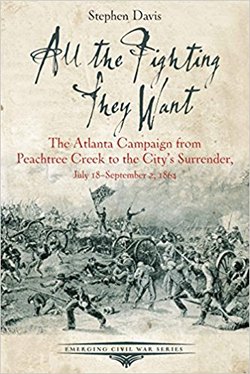
Jeffrey Wm Hunt
Savas Beatie, 2017, 312 pp., $29.95
ISBN: 978-1-61121-343-0
Image courtesy of amazon.com
The Gettysburg Campaign is one of the more written about conflicts in the American Civil War yet for all the books and articles written about it, there are still things we have yet to learn. In Meade and Lee After Gettysburg, Jeffrey Wm Hunt explores the end of the campaign from July 14th – July 31st, 1863, as the campaign was winding down, and some of the small battles which occurred. While most books on Gettysburg do talk about these small battles, Hunt’s work strives to give us an in-depth account of what happened in those places instead of trying to sum them up in one chapter. Now there are books about the aftermath of the Battle of Gettysburg, but this one is brings a fine analysis to certain battles on the way towards Virginia.
Jeffrey William Hunt is the Director of the Texas Military Forces Museum located in Camp Mabry in Austin. He is also an Adjunct Professor of History at Austin Community College. He has a degree in government and a Masters Degree in History from the University of Texas. In 2013, he was named an honorary Admiral in the Texas Navy by Governor Rick Perry. He is the author of The Last Battle of the Civil War: Palmetto Ranch, and has also contributed to Essential Civil War Curriculum, the Revised Handbook of Texas, and the Gale Library of Daily Life: American Civil War.
As I stated in the introduction, most books on the Gettysburg Campaign cover the end of the conflict with a simple chapter chronicling Lee’s escape into Virginia while only mentioning a few battles on the way. Hunt’s work looks to fix that. Throughout the work, Hunt starts to describe these final moves from Gettysburg to Culpepper Court House as a grand game of chess, which I thought was quite provoking on thinking of these weeks. The mindset of George Meade presented here was fascinating. There are some authors who just give the impression that once Meade won the Battle of Gettysburg, he was finished with the task at hand, but Hunt says otherwise. Meade attempted to outthink his enemy, push towards certain points of the map which would not seem usual. He wanted to trap Lee and bring that victory which the high ranking officials in Washington so wanted to see. The narrative in the work shows that strategy playing out in the mind of Meade with great fascination. I also enjoyed the narrative when it came to General Lee and his men, defeated, yet still trying to make their way across the Potomac, back into Virginia. From the Battle of Falling Waters in 1863, to the Culpeper Court House, these conflicts are analyzed to a solid point, using the Official Records, regimental histories, and other primary sources to such a finite point, that the research within this book is amazing.
I highly recommend this book to anyone interested in the Battle of Gettysburg. This is the book which should be read after reading any work about that seminal battle. The narrative is striking, the maps are well drawn and beautiful, and the research is top notch. Jeffrey Wm Hunt should be praised for his work here and I cannot wait to see what else he is working on.


 RSS Feed
RSS Feed
